Advertisements
Advertisements
प्रश्न
- An electrostatic field line is a continuous curve. That is, a field line cannot have sudden breaks. Why not?
- Explain why two field lines never cross each other at any point?
उत्तर
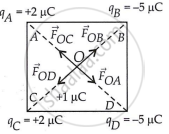
As, `vecF_(OA) = vecF_(OC) or vecF_(OA) + vecF_(OC) = 0` ...(i)
Therefore, at zero, the net force on the charge is + 1 µC.
`vecF = vecF_(OA) + vecF_(OC) + vecF_(OB) + vecF_(OD) or vecF = 0`
An electrostatic field line is a continuous curve because a charge experiences a continuous force when traced in an electrostatic field. The field line cannot have sudden breaks because the charge moves continuously and does not jump from one point to the other.- If two field lines cross each other at a point, then electric field intensity will show two directions at that point. This is not possible. Hence, two field lines never cross each other.
APPEARS IN
संबंधित प्रश्न
Why do the electrostatic field lines not form closed loops?
Why do the electric field lines never cross each other?
Which among the curves shown in the fig. cannot possibly represent electrostatic field lines?
(a)

(b)

(c)
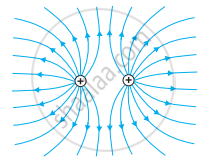
(d)
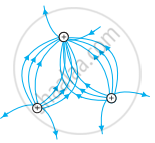
(e)
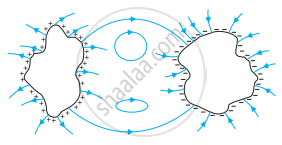
A point charge (+Q) is kept in the vicinity of an uncharged conducting plate. Sketch the electric field lines between the charge and the plate?
The figure shows the field lines on a positive charge. Is the work done by the field in moving a small positive charge from Q to P positive or negative? Give reason.
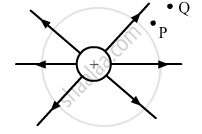
Two bar magnets are quickly moved towards a metallic loop connected across a capacitor ‘C’ as shown in the figure. Predict the polarity of the capacitor.

The intensity of the electric field at a perpendicular distance of 0·5 m from an infinitely long line charge having linear charge density (λ) is 3-6 × 103 Vm-1. Find the value of λ.
Answer the following question.
Draw the pattern of electric field lines when a point charge +q is kept near an uncharged conducting plate.
Answer the following question.
Derive an expression for the electric field due to a dipole of dipole moment `vec"p"` at a point on its perpendicular bisector.
Explain why two field lines never cross each other at any point?
Figure shows electric field lines in which an electric dipole P is placed as shown. Which of the following statements is correct?
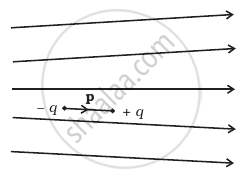
An electron enters an electric field with its velocity in the direction of the electric lines of force. Then ______
Figure shows the electric field lines around three point charges A, B and C.
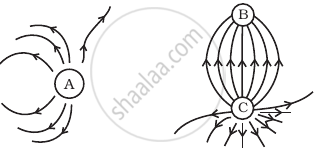
- Which charges are positive?
- Which charge has the largest magnitude? Why?
- In which region or regions of the picture could the electric field be zero? Justify your answer.
(i) near A, (ii) near B, (iii) near C, (iv) nowhere.
The magnitude of the electric field due to a point charge object at a distance of 4.0 m is 9 N/C. From the same charged object the electric field of magnitude, 16 N/C will be at a distance of ______.
